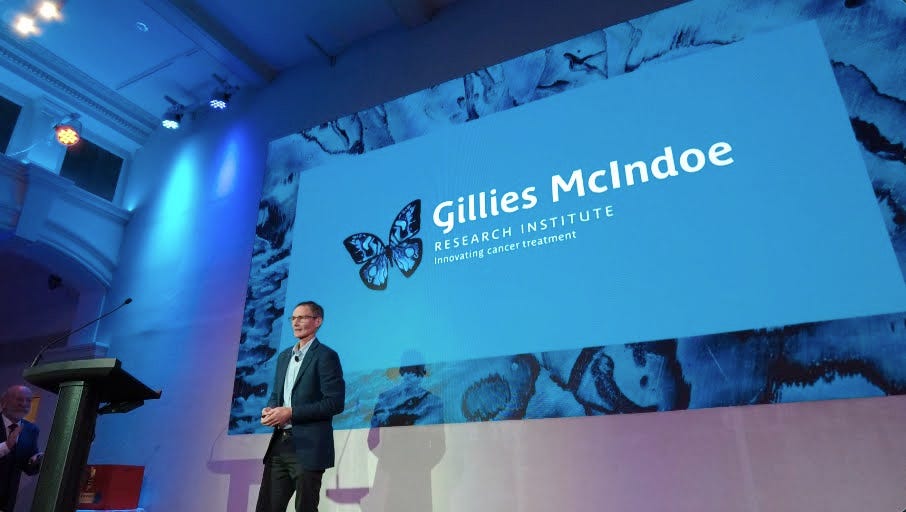Look for the landmarks
My presentation at the Gillies McIndoe Research Institute 'Gala Night'
Last week I gave a presentation at a function for the Gillies McIndoe Research Institute. I’m an Ambassador for the Institute, and we had been planning and preparing for the function for several years, as a way to acknowledge and thank our supporters, and encourage further support. In particular, philanthropic support - to fund our clinical trial to develop an innovative new treatment for glioblastoma (an aggressive form of brain cancer).
So it was an important occasion and my role was to give the keynote presentation.
The pandemic, and its subsequent restrictions on hosting in-person events in New Zealand, meant we had to defer the fundraiser event in 2021 and 2022. Like many event organisers around the country, we had our fingers crossed for hosting our event this year.
It was personally important to me to give the speech. After my cancer recurrence in 2021, and the subsequent rounds of surgical treatment in 2022, I needed to retrain my ability to speak, and compensate for the various impairments that came from several of my surgeries.
While those impairments, and the uncertainty of whether I’d be capable of delivering a speech at all, obviously made keeping the commitment more difficult, giving a speech became more meaningful, for several reasons.
Firstly, the idea of giving the presentation was an important goal, to keep me focused on rehabilitation in the past year. I mention that in the presentation.
Secondly, the occasion represented a very important opportunity to acknowledge all the help and skilful treatment I had (like many other head & neck cancer patients around the world). It was also a way of telling the story of what modern head & neck cancer treatment can be like, the types of difficulties that must be navigated, and why it is important we invest in a much better way of treating all types of cancer. The Gillies McIndoe Research Institute is pioneering that work.
Finally, my speech impairments forced me to make choices about brevity, simplicity of word selection and use of video on the night - all of which benefited the clarity of the presentation, I think.
So, this was a unique and rare opportunity which needed to be seized as best I could. I decided to give it the works, by telling the story of my cancer treatment and journey from hospital to Mt Fuji, back into treatment last year, and then ultimately into The Ring Of Fire, New Zealand’s toughest alpine ultra marathon.
Here’s the video below, of my presentation on the night (a special thanks to Erin from the Institute for recording it).
There are many, many people who helped make this speech possible. Some of them include: my medical team (particularly my surgeons and my SLT Liv, and my Steel cancer rehab physio Jo); and of course my friends and family (particularly Maree who helped review the draft version and make crucial edits to improve it). Aleks, Hannah, Paul and Dot listened to my first rehearsal (after which I did another 10 rehearsals, that week, including one with Mia). My friend Garr, whose work I am longtime student of, many years ago inspired me to choose to run up Mt Fuji in Japan. Garr’s work over the years taught me some important principles about the way to present the story.
It was a very, very important opportunity to give the best presentation I could on the night - so thankyou all!




Nick - you are a legend. I love hearing about your adventures and things you’re up to. Can’t wait for the book…! X
Beautiful Presentation Nick. You made me cry. You really are a LEGEND! You are the strongest person I know. Your amazing.❤️